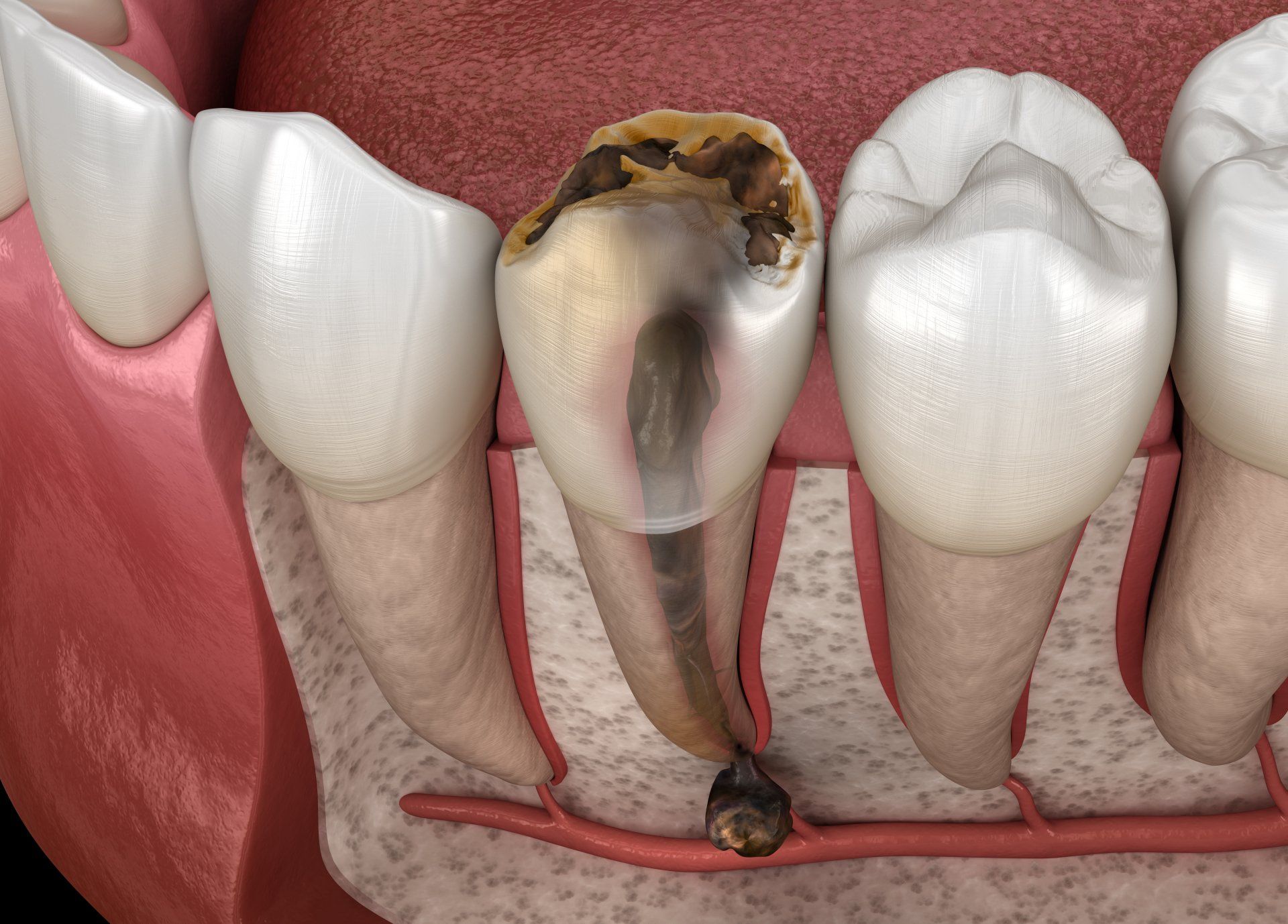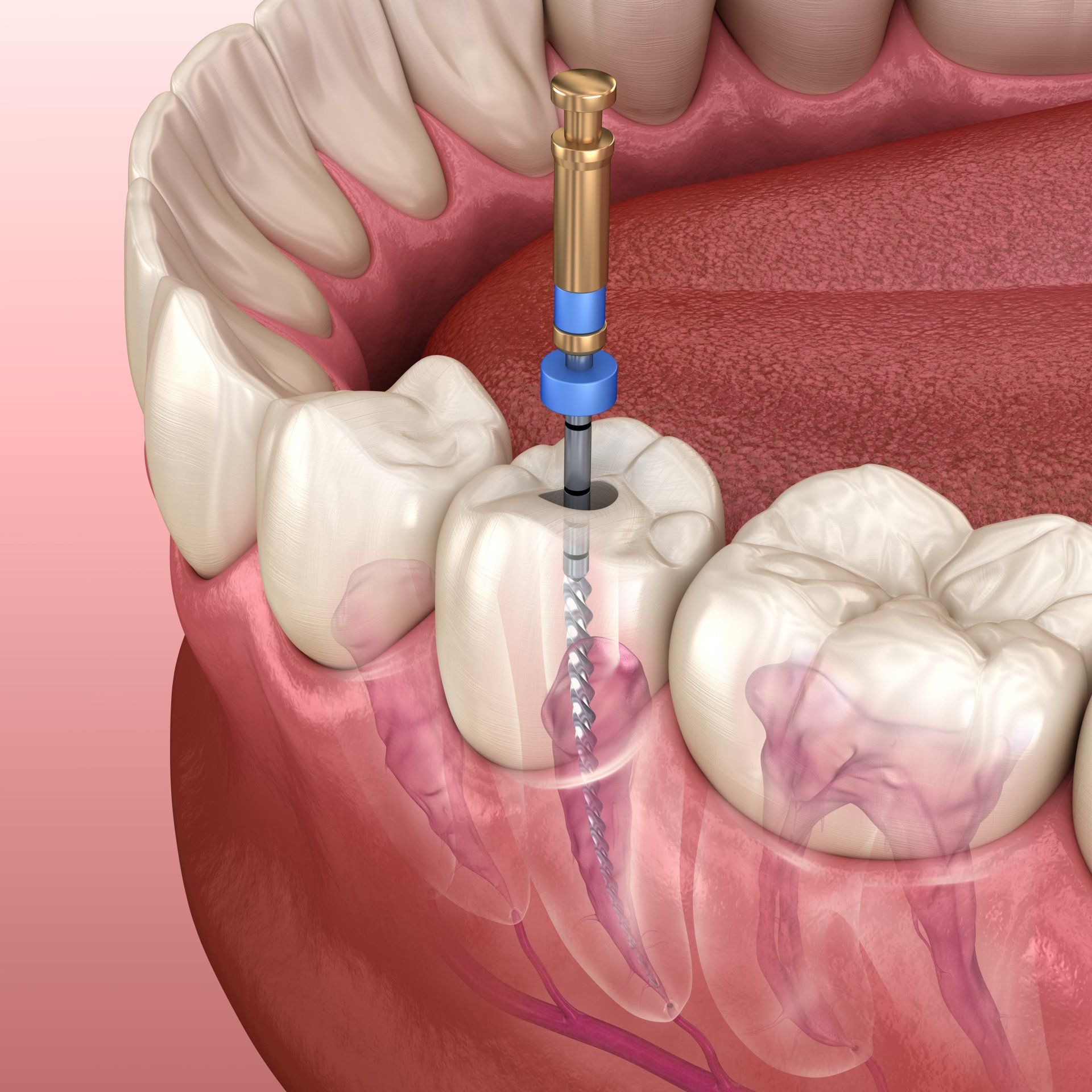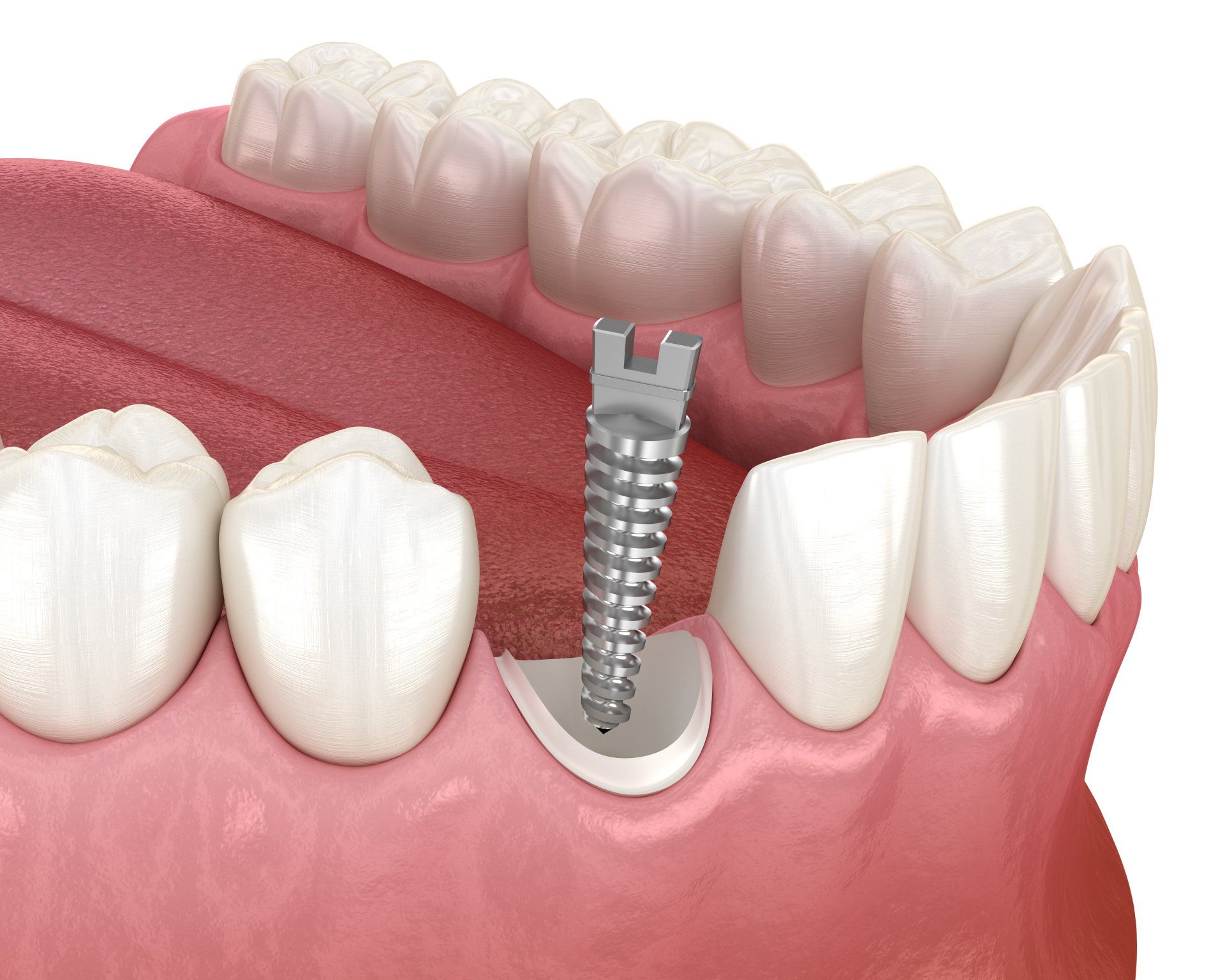Endodontics and Root Canal Therapy
When the nerve of the tooth is damaged by a cavity, prior fillings, or trauma, the nerve may die and cause significant pain. At our office, we can quickly address the source of the pain and restore the damaged tooth.
Dental Abscess Formation

Dental abscesses are a painful condition that often result in constant dull throbbing, swelling, drainage, fever, and in rare cases even difficulty swallowing or breathing. They occur when the nerve of the tooth dies due to a deep cavity involving the pulp of the tooth. It can also be caused by prior restorations that were close to the nerve, trauma, and grinding.
When the nerve dies, it is then susceptible to bacterial infections. In this case, there are only two possible treatments to resolve the infection. The first is a root canal, in which the infected nerve is removed and then replaced with restorative materials. The other option is an extraction, which leaves the patient without a tooth unless they pursue other treatments.
It is always preferable to attempt a root canal in order to save the tooth. If the tooth is extracted, the treatment required to replace the missing tooth is either an implant, bridge, or partial denture. If not replaced, the gap from the extracted tooth can lead to movement of the remaining teeth, tooth fractures, and other dental conditions.
Root Canal Therapy

Root canals, although they have a negative stereotype from popular media, are the ideal way to preserve a tooth where the nerve has died or become inflamed.
Once you have been diagnosed with a condition requiring a root canal, you will often be put on an antibiotic to aid in the resolution of the abscess.
At your root canal appointment, the tooth will be anesthetized to ensure your comfort. The pulpal chamber will be accessed, and a series of files will be used to remove any dead or infected tissue within the tooth. The canals will then be disinfected to ensure there is a minimal risk of re-infection and subsequently filled with a rubber-like material called gutta percha, which is heated and sealed into the tooth.
Post and Core Buildup

Once the root canal is completed, the tooth needs to be restored with either a filling or a crown. Fillings are only recommended in teeth with a small root canal, while crowns are the preferred restoration for almost all other situations.
The rebuilding of the tooth structure following a root canal is known as a core buildup, where the majority of the missing tooth structure is replaced with a resin restoration that bonds directly to the tooth. This core buildup will then be further refined to fit a crown to the tooth.
When more than 50% of the tooth is missing and the core buildup cannot be adequately retained with the adhesive materials, a post may be needed to help rebuild the tooth, as shown above. These posts are placed directly into the root of the tooth where it was previously filled after a root canal and cemented into place. The adhesive material used to rebuild the tooth can then be attached to this post, which acts like an anchor holding the crown in place once it is completed.


